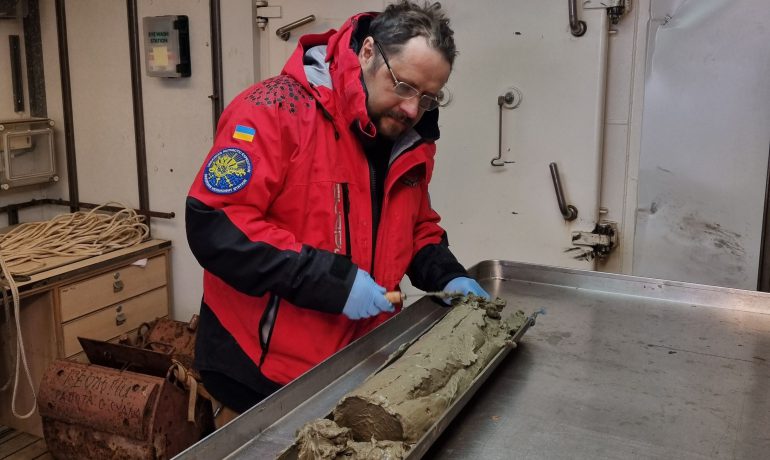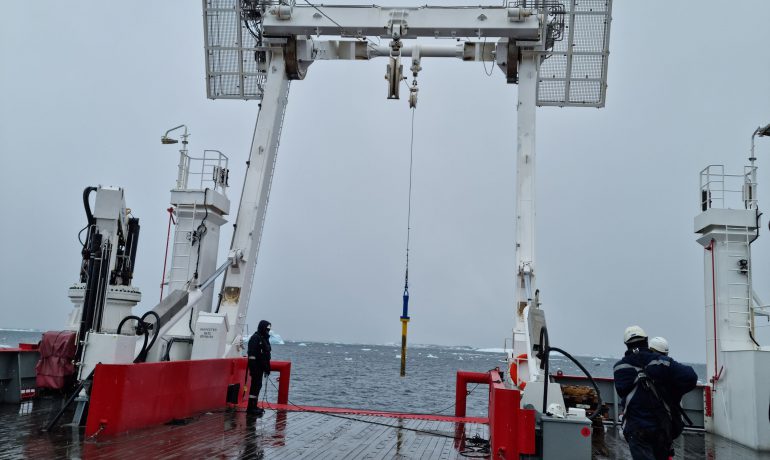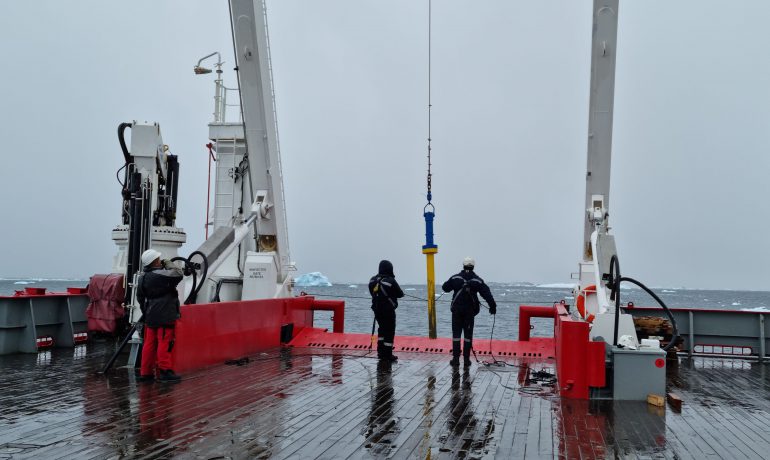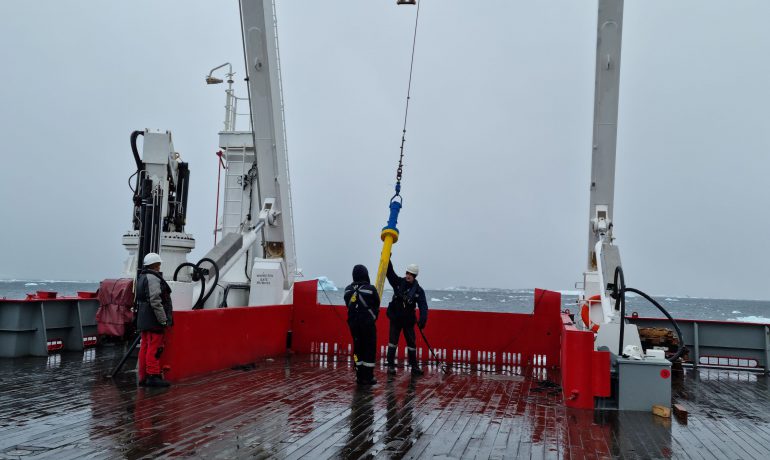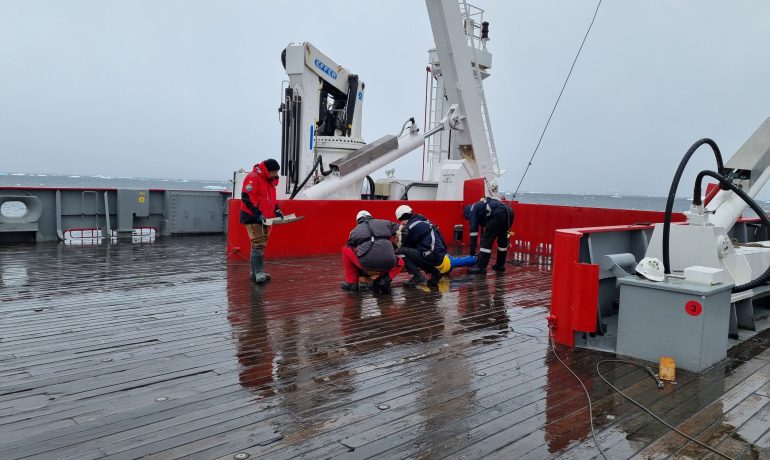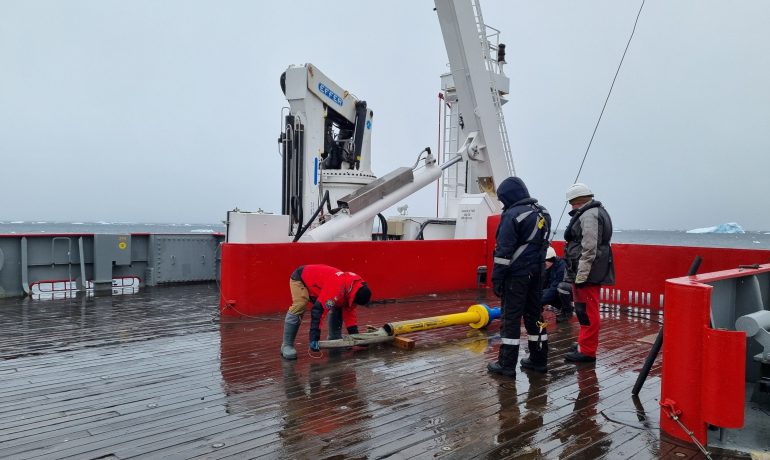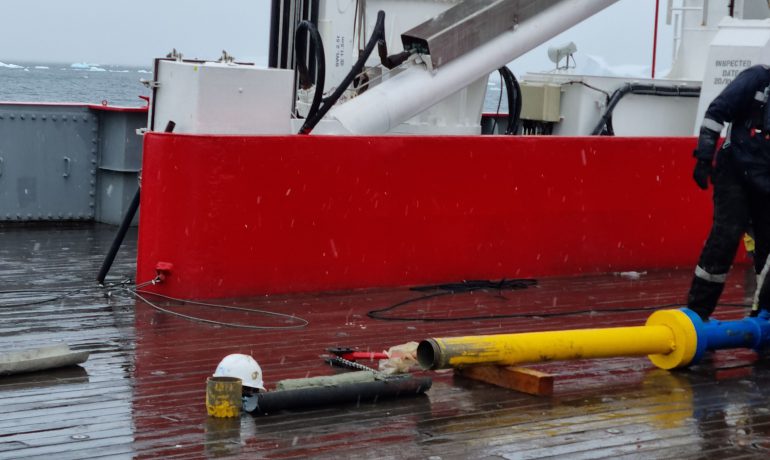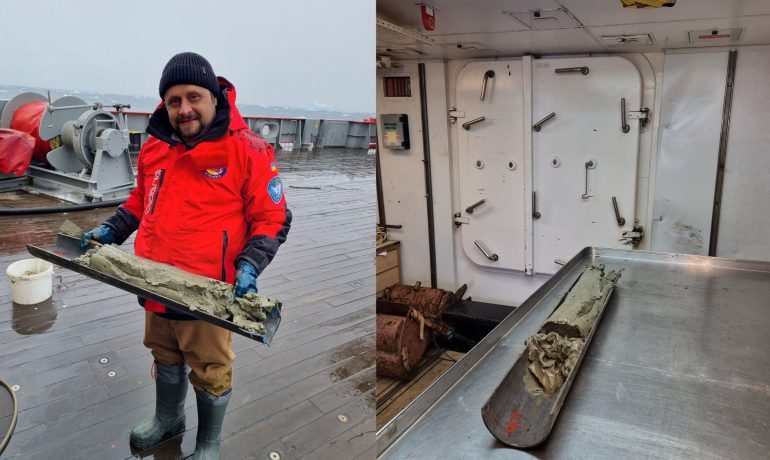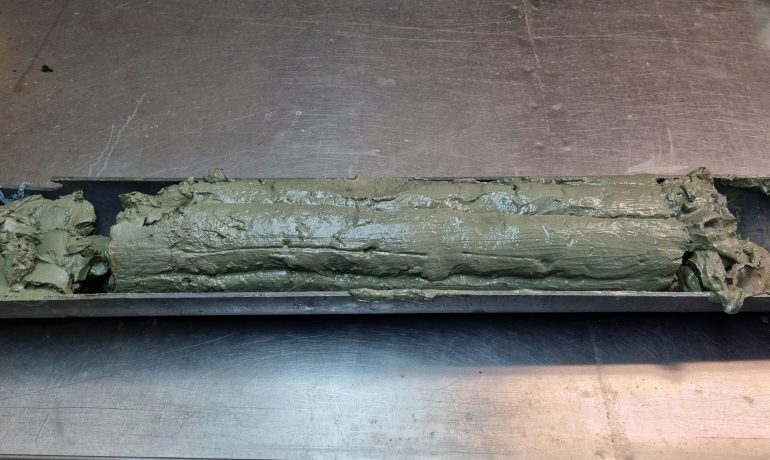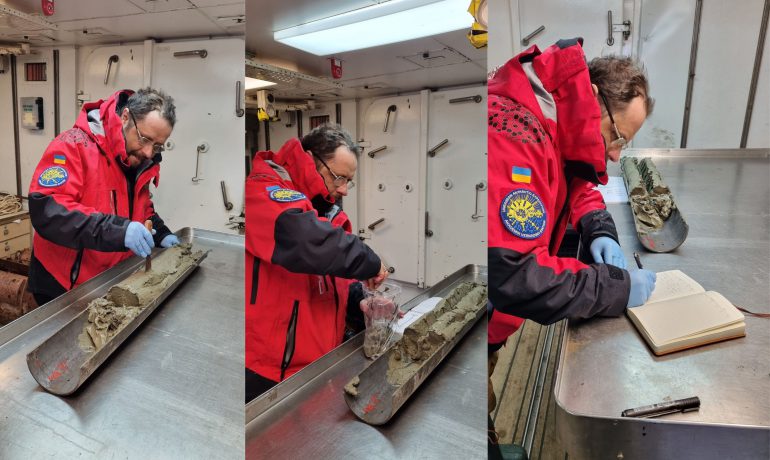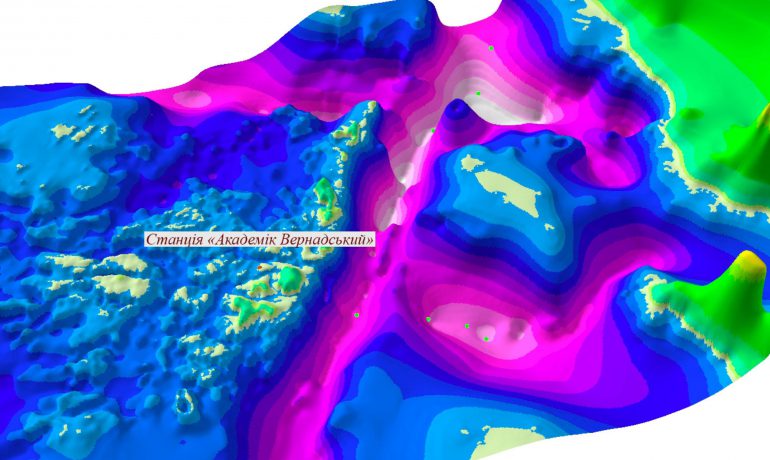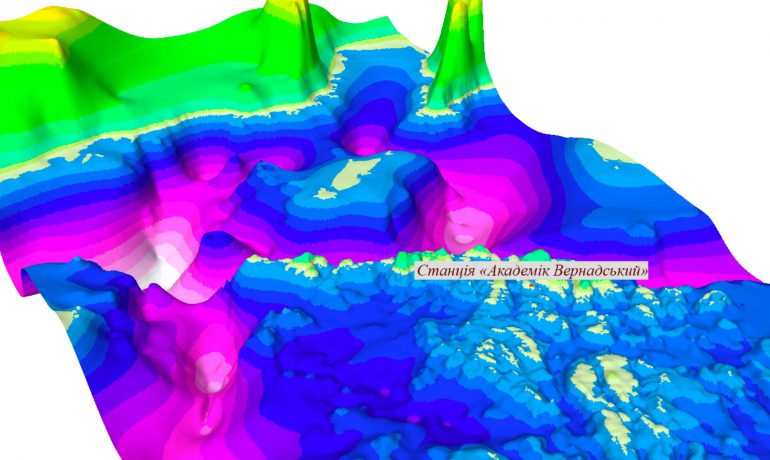During the current voyage of Noosfera from Chile to Vernadsky station, Ukrainian scientists continued the geological research of the Southern Ocean, initiated in the first Antarctic season of the ship (2022).
Scientists managed to take 7 sediment cores at 7 points near our station (Penola and French Straits, where the tectonic fault and glacial valleys are found). On board, the samples were described in detail, photographed and divided into parts for delivery to Ukraine. Further, they will be studied in the laboratories of Kyiv and Odesa.
Why do we need this research? Bottom sediments are a kind of record of the Earth’s history. Their analysis makes it possible to understand what happened on the planet thousands and millions of years ago, and to make predictions for the future, in particular, regarding global climate.
“The coming out of the last ice age (about 20 thousand years ago) to the current temperature maximums passed not in one step. This process occurred step by step with so-called fluctuations, when warmer periods occurred, which were then replaced by short periods of cooling. Analysis of this dynamic process will help to understand what is happening with the global climate and what can await us in the near future – further warming or, on the contrary, cooling”, – explains the participant of the seasonal expedition, geologist Sergii Kadurin.
A symbolic place for research is Antarctica, which has undergone minimal human impact and has preserved the oldest ice sheet on the planet. Analysis of the geological history of the continent shows that this cover is a few tens of millions of years old. It is clear that the size of the glacier increased and decreased during this time, but it has been was in Antarctica long before the last maximum of the Ice Age on Earth, when glaciers were spread in the oceans and on the European continent much wider than they are now. It is important that the glacier in Antarctica has survived to this day – during one of the warmest periods in the Earth’s climate.
Consequently, unlike other territories, changes in the accumulation of bottom sediments in Antarctica are permanent, and periods of decrease and increase in the level of the glacier can be clearly traced from them.
In particular, sediments begin to accumulate as soon as the glacier detaches from the crystalline base. That is, even when the glacier still covers the surface of the ocean, but there is already free water between the ice and the bottom, sediments already begin to accumulate on the bottom.
Further melting of the glacier will lead to the freeing of the sea surface from permanent ice, which in turn will lead to a change in the conditions of accumulation and composition of bottom sediments. When periods of cooling and increasing glacier levels occurred again, the composition of bottom sediments changed again.
If the size of the glaciers increased so much that they again filled the entire coastal sea basin to the very bottom, the ice moved the accumulated sediments like a grader or bulldozer. This led to changes in the conditions of rock deposition, which is also an important diagnostic feature.
All these changes are quite easy to identify in bottom sediments. So, their research will allow scientists to reconstruct the history of climate change on our planet over the past 20 thousand years.
Let us recall that in the first Antarctic season of Noosfera, Ukrainian scientists have managed to lift 2 cores of bottom sediments from the Penola Strait. Further research allowed us to discover how the topography of our area of the Argentine Islands has changed over the past 25 thousand years. Based on these findings, the locations for collecting new samples in the Southern Ocean for this year’s work were determined.
Photo: Anna Torgonenko, Sergii Kadurin


